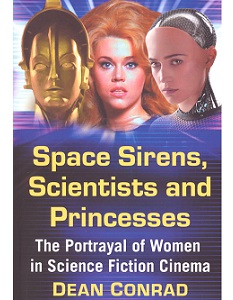The place of women in society has been a topic of conversation and analysis for many years (and rightly so), but few books have been published on the role of women in the space profession. This is, however, not the case for the film industry, as this book - subtitled “The portrayal of women in science fiction cinema” - illustrates well. Hopefully, readers of ROOM: The Space Journal – which is most definitely an ‘equal opportunities’ publication – will note the parallels with the real space community.
The author, a film producer and educator, has surveyed “more than 650 films across 120 years” to chart the “highs and lows of women’s visibility in science fiction’s cinematic history”. It begins with silent films and the birth of ‘space opera’ and ends with the likes of Felicity Jones as Jyn Erso in the “Rogue One” Star Wars story.
Much of the coverage is bound to be predictable: we all know that women were often used as ‘window dressing’ in the earlier movies and rarely appeared as leading characters, but there are many interesting exceptions to the rule in science fiction. Think: Ripley in The Alien franchise, the ‘tooled up’ Sarah Conner in Terminator 2 and Trinity in the Matrix. As with many other aspects of SF, its portrayal of women is often well ahead of the mainstream genres. And for those who need convincing further, remember Carrie Fisher’s spunky Princess Leia in the original Star Wars film, which was released in 1977 when ‘feminist’ was an insult and ‘equality’ a pipedream.
As the author admits, it is always tempting to organise this type of book around themes, such as ‘robots’ or ‘mothers’ in SF, but this would “obscure the general development of female representation…over time”. Comfortingly (who needs the paradox of time travel?), he opts for a chronological analysis that refers to earlier or later films to add context. Ultimately, anyone who likes science fiction and is willing to see it as more than simple entertainment will like this book. It is illustrated with monochrome photos and has an impressive array of appendices, including chapter notes, a bibliography and filmography, and an index.
The author’s conclusion summarises his overall thesis: “Whether the current situation will lead to revolution is not clear [but] it does feel as though the genre has reached a tipping point. Female science fiction characters are closer to glory than at any time in their history”. Let us hope that this is also the case for the space profession.











